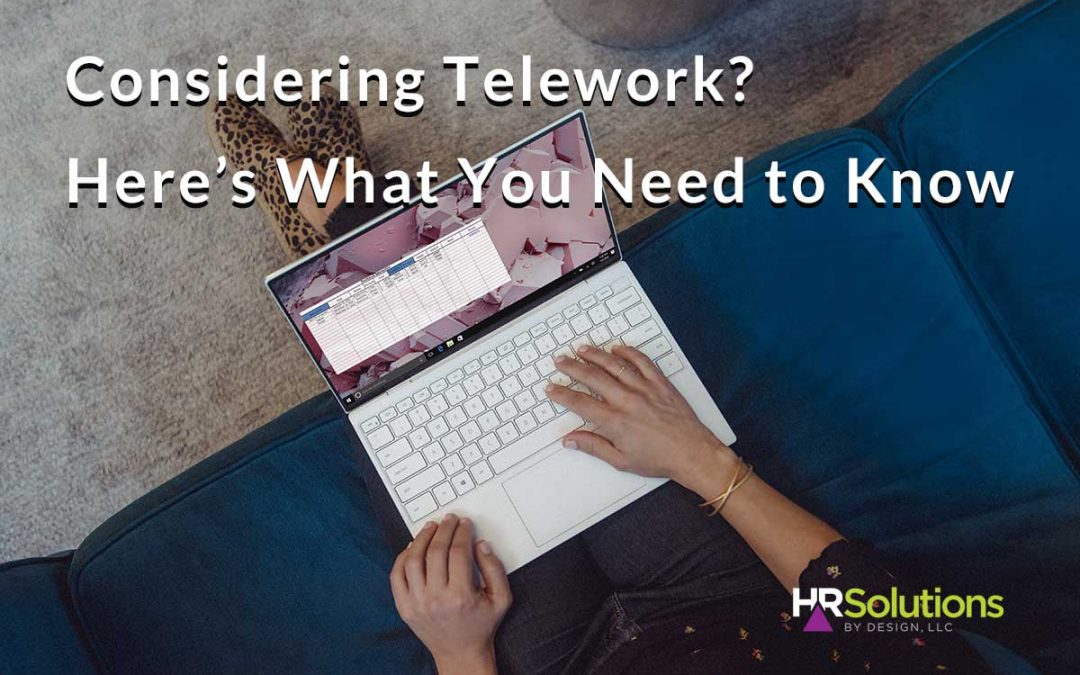As COVID-19 continues to wreak havoc on businesses across the nation, many businesses are considering telework as an option for keeping employees safe and healthy. But, for many business leaders, this is uncharted territory and navigating the complexities of protecting your company and employees in these emotional times can be daunting.
If you’re considering a telework program, either on a targeted or full-scale basis, you need to consider all of your stakeholders’ needs: employees, facilities and customers. Specific issues to be considered when deciding if telework is feasible for your organization include: the impact it may have on clients, other employees, cost-effectiveness, efficiency, safety, quality, necessary equipment and infrastructure, and your ability to ensure legal compliance.
Benefits of Telework
Not only can telework benefit employees, it can also benefit the organization. Here are some highlights:
- It allows the organization to proactively minimize the risks associated with COVID-19 transmission
- It put the employee in the driver’s seat with regard to decisions that directly affect them such as: their personal circumstances, anxiety, depression, distractions, etc. The more control over decision making an employee has, they higher their engagement and as a result the higher their productivity
- It provides your organization the to beta test a telework program and its impact on both your employees and organization – what works and what doesn’t.
Considerations for Telework
The primary question to consider when considering if telework is a viable option for a particular position depends largely on the work performed and the performance of the employee(s) performing that work. For many leaders their initial reaction to the question of telework is, “absolutely not – it will never work:” After getting past that initial reaction, the real work of thinking through the viability of telework begins.
Are your positions suitable for telework? Consider the following questions:
- Are the work activities portable? (such as job tasks that are easily quantifiable or primarily project based).
- Can the work activities be performed effectively outside the office (at least on a temporary basis)? Telework may not be an option if:
- the position requires routine, in-person contact with others (employees, clients or the public) or;
- the employee needs regular access to documents (or other items or materials) that cannot be removed from the workplace
- Are there any contractual arrangements or client concerns or objections that need to be reviewed related to teleworking?
- Is contact with other employees or clients predictable
- Is the technology and/or equipment needed to perform the job available remotely?
- Does the employee have a safe remote workspace?
- Does the employee have a history of solid work performance?
- Does the employee take initiative to get results?
Telework may become the “new” normal and as a result could enhance your ability to attract and retain top talent. If you’ve never considered telework, this may be your chance to protect your employees and explore alternatives to the traditional workplace.
Next week we’ll give you tips for managing a remote workforce. Stay tuned and if you have specific questions related to telework, give us a call.


